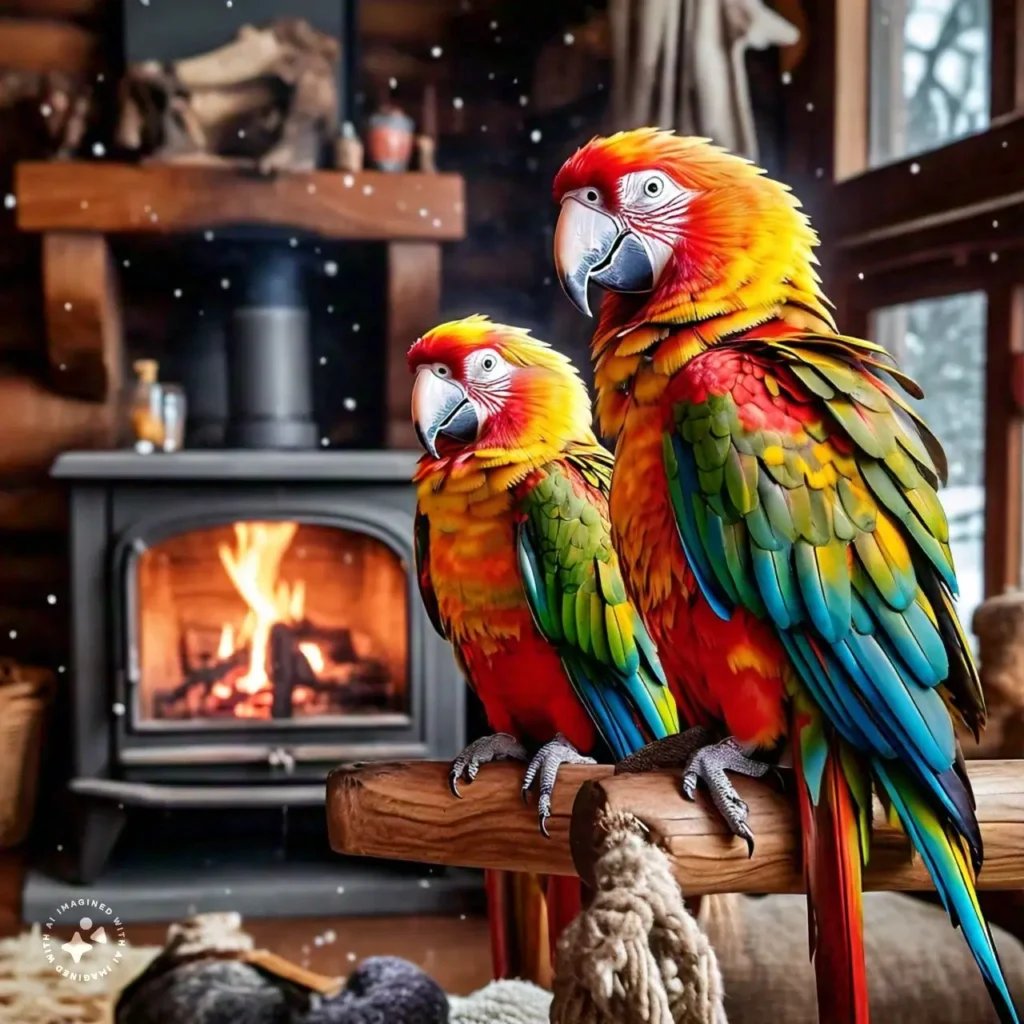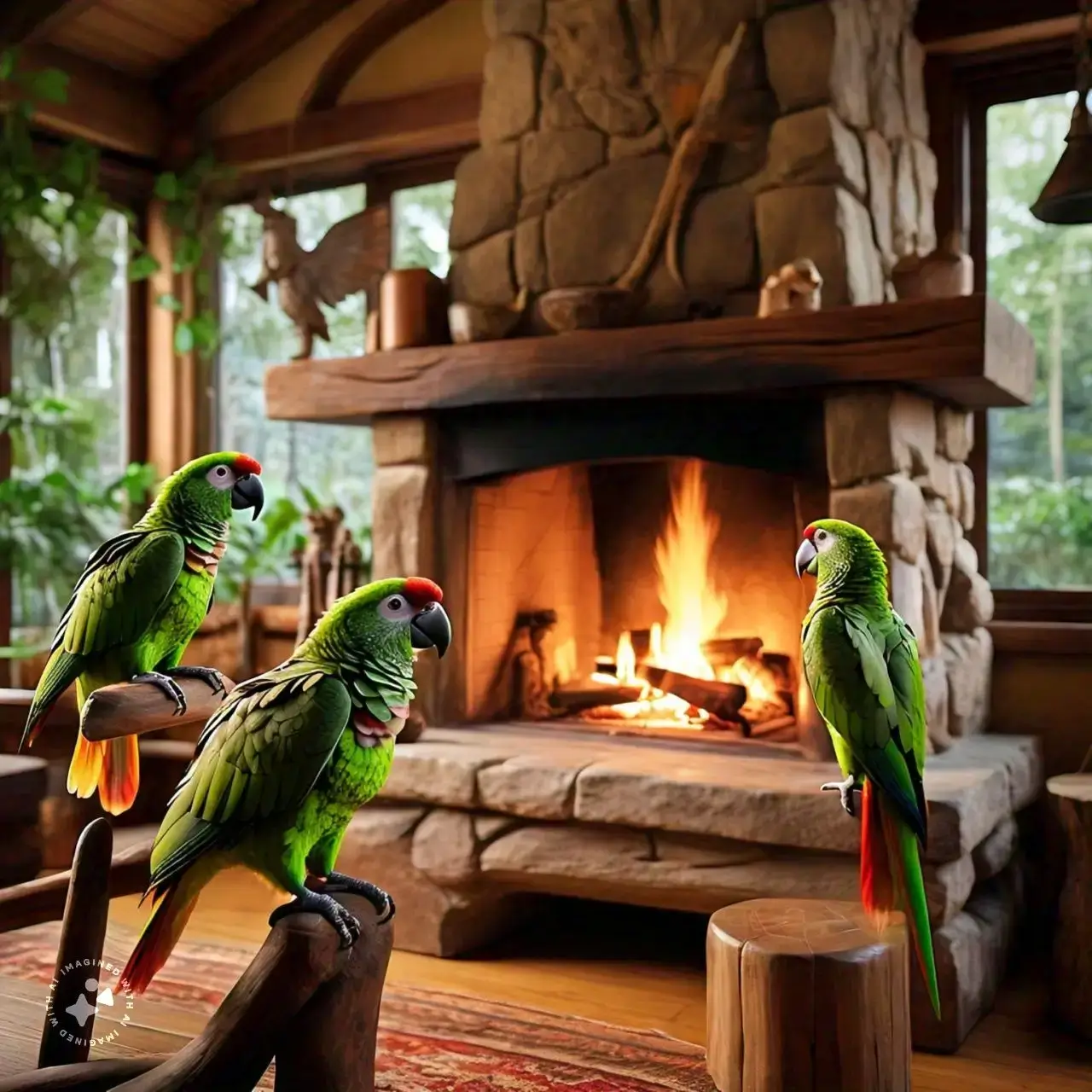Nearly half of all US homes have a fireplace, making it a common feature in households. However, with a fireplace comes important considerations for pet owners, particularly those with parrots.
In this article, we’ll explore whether wood-burning fireplaces pose a threat to parrots and provide safety measures to ensure both you and your feathered friends can safely enjoy the fireplace.
Are Wood-Burning Fireplaces Dangerous For Parrots?
While a wood fireplace itself isn’t inherently dangerous to a parrot, there are potential risks associated with it. The open fire and smoke emitted by a wood-burning fireplace can pose a danger to your bird.
The high temperatures generated by the fireplace can also lead to harm if a parrot were to land on it.
It’s important to treat the fireplace as you would any other hot element in your home, such as an oven or stovetop. However, the unique aspect of a wood stove is that it uniformly gets very hot and can present a real threat to a parrot if they get too close.
Additionally, maintaining proper heating to prevent backdrafts is crucial, as the resulting smoke can have severe health implications for your parrot, including breathing issues, skin conditions, rapid heart rate, cancer, and pneumonia.
How To Keep Your Parrot Safe From Your Fireplace:
1. Training:
The primary measure to protect your parrot is training them to view the fireplace as a threat. This involves familiarizing them with the fireplace when it’s not in use, allowing them to understand that it’s not a safe landing spot.

Creating a more appealing perch away from the fireplace’s shiny components can help redirect their attention. If necessary, consider keeping your parrot in their cage when the fireplace is in use.
2. Burn Only Natural Logs:
When using the fireplace, opt for natural logs rather than artificial alternatives like Duraflame or Chimney Sweep logs, which emit chemicals that can be harmful to parrots. Dry natural logs produce less smoke, minimizing potential health risks.
4. Annual Chimney Cleanings:
Regular chimney cleanings by a certified professional are essential to remove creosote buildup and ensure proper airflow for a clean-burning fire. This helps prevent excessive smoke from entering your home, safeguarding your parrot’s health.
5. Consider Safer Alternatives:
If you’re still concerned about your parrot’s well-being, explore fireplace alternatives like:
- Wood-burning pellet stove: A contained system that vents out smoke and gases, reducing the risk of harm to your parrot.
- Vented gas fireplace: A sealed-off option that can be inserted into your existing wood fireplace, minimizing exposure to combustion fumes and smoke.
- Related: horizontal venting
- Electric fireplace: Suitable for heating specific rooms, these emit zero emissions and are not hot to the touch.
- Related: electric fireplace heating
Conclusion:

While wood-burning fireplaces can pose risks to parrots, implementing the mentioned safety measures can help mitigate potential dangers. By taking these precautions, you can enjoy the warmth of your fireplace while ensuring the well-being of your feathered companion.


